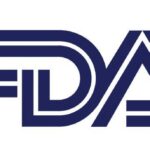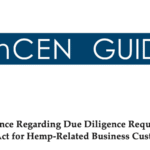United Nations’ Early Opinion on Cannabis
During the 1950s, the United Nations Commission on Narcotic Drugs researched and monitored the medical use of cannabis. In 1961, the Single Convention on Narcotic Drugs, “obliged Parties to place cannabis under strict controls to prevent its abuse.”
In 1968, the United Nations Economic and Social Council came to an agreement that, “the traffic in and abuse of cannabis remains serious in many areas where it has long been encountered, and…appears to be spreading to areas where it has not heretofore been encountered…”
The Commission on Narcotic Drugs recommended that, “all countries concerned increase their efforts to eradicate the abuse of and illicit traffic in cannabis and further recommends that Governments should promote research and advance additional medical and sociological information regarding cannabis…”
All of these regulations against Cannabis sativa included the use of viable industrial hemp seed and industrial hemp extract, of which had been used to produce fiber, industrial oils and non-addictive medicine prior to 1937. In addition, the recommendation of Governments to promote research was not truly adopted by the U.S..
Some research was performed but it was extremely limited. Since 1970 most cannabis research funds were used to prove its negative side effects as opposed to understanding the crops functions and attributes.
1937 – 1970
U.S. Bureau of Narcotics regulates hemp
Bureau reports to U.S. Department of Treasury
Penalty for use: Tax
Penalty is a revenue stream and benefit to society
1970 – 2014
Drug Enforcement Agency (DEA) regulates hemp
DEA reports to U.S. Department of Justice
Penalty for use: Felony or Misdemeanor, Imprisonment
Penalty is an expense and a cost to society
Beyond the recommendation from the Commission on Narcotic Drugs, in 1968 the U.S. Bureau of Narcotic which had operated under the Department of Treasury since inception (in 1930) transferred its operations to the Department of Justice. Cannabis, including industrial hemp and other narcotics, were no longer seen as a tax revenue stream, but instead an incriminating disturbance in society costing tax payers billions over the next decades to come.
By 1970, the U.S. Bureau of Narcotics became the Drug Enforcement Agency (DEA) and under the Department of Justice launched the Controlled Substance Act (CSA). The CSA continued to regulate viable industrial hemp seed as a Class I Drug and subject to felony if caught in possession. Still today the Act considers industrial hemp as dangerous as heroin and more dangerous than highly addictive opiates like cocaine and other synthetic opioids.
2014-2018
Hemp is legalized for research purposes under the 2014 Farm Bill. The research includes production and marketing. States move to develop their own research programs to grow, process and create products related to grain, fiber and cannabinoids.
The 2015 and 2016 Omnibus Bills (aka Federal Spending Bill) both offered strategic language that protects the Hemp Pilot Program from the DEA. These bills offer support that prevents the DEA from using federal funds to block research developments and interstate commerce.
2018 to present
The 2018 Farm Bill removes hemp from the Controlled Substances Act and includes it as a crop under the the Agricultural Marketing Act of 1946. The USDA develops an interim final rule, followed by a final rule to regulate hemp as an agricultural crop.
SEC. 12619. CONFORMING CHANGES TO CONTROLLED SUBSTANCES ACT.
(a) IN GENERAL.—Section 102(16) of the Controlled Substances Act (21 U.S.C. 802(16)) is amended— (1) by striking ‘‘(16) The’’ and inserting ‘‘(16)(A) Subject to subparagraph (B), the’’; and (2) by striking ‘‘Such term does not include the’’ and inserting the following: ‘‘(B) The term ‘marihuana’ does not include— ‘‘(i) hemp, as defined in section 297A of the Agricultural Marketing Act of 1946; or ‘‘(ii) the’’. (b) TETRAHYDROCANNABINOL.—Schedule I, as set forth in section 202(c) of the Controlled Substances Act (21 U.S.C. 812(c)), is amended in subsection (c)(17) by inserting after ‘‘Tetrahydrocannabinols’’ the following: ‘‘, except for tetrahydrocannabinols in hemp (as defined under section 297A of the Agricultural Marketing Act of 1946)’’. Approved December 20, 2018.
Regulation Outside the U.S.
The Misuse Drugs Act of 1971 banned cannabis cultivation (and industrial hemp production) in the United Kingdom and its territories; however, cannabis sits with opiates in Class B and is considered less dangerous than heroin.
The United Kingdom, Australia, Canada and the EU legalized hemp production between 1994-1998. Canada went on to legalize Cannabis in 2018.
Russia, China, and Eastern European countries never regulated industrial hemp as equivalent to marijuana. Instead the countries are the some of the world’s top global producers of industrial hemp agricultural materials.
These nations import a majority of their finished hemp products to the largest hemp consuming nation, the United States.



